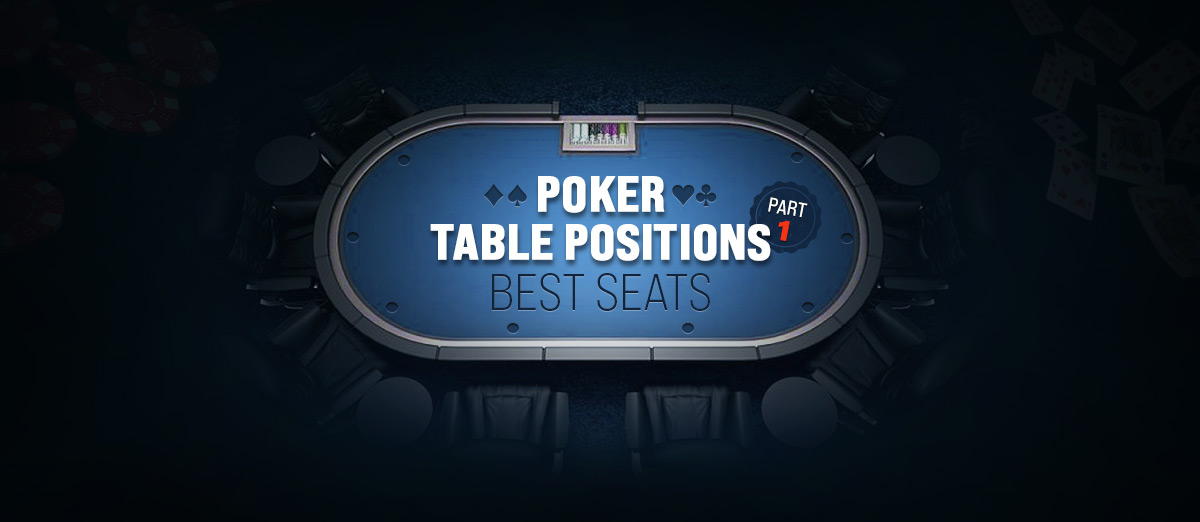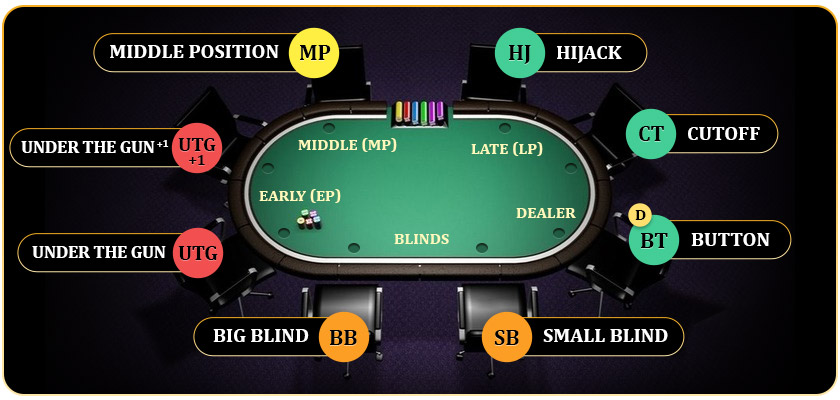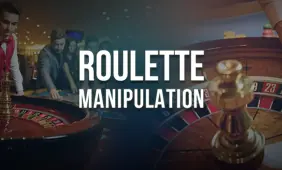Best Poker Positions Explained – The Importance of Your Seat at the Table

If there is one thing that many poker players don’t understand well enough or underestimate its importance, it is the power of position.
The position plays a crucial role in what options you will have with the cards you are dealt, and ultimately it determines just how profitable you can actually be in a particular spot.
Of course, I am referring to your relative position at the table, which changes every hand as the button goes around the table and allows every player to play in every position in every orbit that passes.
This article will cover all the positions at the table, starting with the most favorable ones and going down to the ones that cause the most trouble to players.
The Button – Holy Grail of Poker Positions
Holding the dealer button in a poker hand is the biggest advantage you can have before the cards are dealt, without question.
The player on the button will have the majority of players act before him pre-flop, which means he will have a good idea of what those players may be holding.
Only the players in the blinds will be acting after the button, but that is not a big problem since you always have a position on them after the flop.
If you have the button and the players in front of you show little interest in the pot, you may be able to steal the blinds with a simple raise, which is a common tournament strategy.
On the other hand, if one of the later positions does decide to steal before you, re-raising a wide range of hands will often result in you winning both the blinds and the raise that the other player has put in.
When someone decides to defend, and the hand does go to the flop, you will have the advantage of acting last on the flop, turn, and river, giving you a massive advantage.
By being last to act, you will have the option to control the size of the pot, fire c-bets and delayed c-bets, or skip betting on certain streets to deny your opponent the opportunity to check-raise you.
The button is the best position for avoiding traps that your opponents may be setting up for you, as you can simply check back and ruin their plans for a big play over the top.
Both in the biggest poker tournaments and in cash games, you should be playing more hands on the button than in any other position, and you should be playing them aggressively.
The Cutoff – A Tournament Powerhouse
The cutoff is the position to the right of the button, and one where you will have many of the advantages of the button, and all of them if you can make the dealer fold his cards.
By raising first in or 3-betting an earlier position raiser, you will be giving yourself the opportunity to get absolute position and only play against players who are out of position against you.
However, you should keep in mind that many players will play back at you from the button, so you should be careful how active and aggressive the player is to your left.
If you see that the player to your left is playing pretty straightforward, I recommend opening wider from the cutoff and trying to take control of as many pots as you can.
Playing against the blinds will be made easier by having position, as you can easily profitably call their 3-bets with a wide range of hands, or even 4-bet them when you see them getting out of line.
It is recommended to rarely fold to 3-bets from the blinds if you are deep enough while folding or 4-betting often against the button, as playing them out of position will cause you a world of pain on later streets, especially with speculative hands that tend not to hit too well on most boards.
The Hijack (Or Middle Position in Full-Ring) – Play with Caution
The hijack is the next most favorable position in poker, although it is one that starts to force you to play relatively tight and not open too many hands.
In the hijack, you will have the opportunity to steal the blinds, but with both the cutoff and the button to your left, you will often find yourself on the receiving end of aggression.
You will still want to open a relatively wide range to prevent your opponents from knowing exactly what you have, but I recommend only opening solid suited connectorsi, suited Broadway cardsii, and premium holdings.
It may seem too tight to fold a hand like QT or 98 off-suit in the hijack, but the aggressive nature of today’s poker games makes this the right play, as these hands will not play very well out of position in 3-bet pots.
In poker tournaments, the hijack is ideal to set up a 4-bet jam with a hand like TT or AQ, which will play reasonably well against the in-position players’ 3-betting ranges, which tend to be loaded with bluffs.

Under the Gun 9 (Or early Position in Full-Ring) – Tight is Right
In a six-max game, you will have all five of your opponents left to act when you are under the gun (UTG), and things will only get worse at an 8-max or 9-max tournaments table.
This is why every poker pro will tell you that the old poker proverb “tight is right” actually tells the truth for the UTG player looking to enter the hand.
The one thing that I would strongly advise you don’t do, and many players still do, is limp from this position. Just calling the blind is weak and does not accomplish any other goal, making raising the hand superior.
You should be raising with a very strong range, mixed with a few sprinkles of bluffs like A5s or 98s for good measure, to make you unpredictable even from UTG.
Remaining disciplined UTG is one of the things that many pros struggle with, as they look to play as many hands as possible against weak opponents. However, you should wait for better positions to do this unless you are dealt good cards.
Note that if you are playing against very unobservant opponents who like to stuff a lot of money into the pot, you may try limping your biggest hands like KK and AA from UTG and come over the top when someone raises it up, which many bad players often will do with a wide array of hands.
The Small Blind – Out of Position against Everyone
There is being out of position, and then there is being in the small blind.
This position is unfavorable for two reasons. First, you will be out of position against every single player at the table, including the big blind.
Second, you will have to put in one-half of the big blind without even looking at your cards.
For these two reasons, the small blind is one of the least profitable positions, and hardly anyone can actually make a long-term profit from it in any game.
That said, there are still ways to reduce your losses from the small blind, and the best way to go about it is by playing a pretty tight range and playing them aggressively.
You should completely forget about set-mining or entering with speculative hands when you are in the small blind. What’s more, you should almost always be 3-betting with the hands you do plan on playing.
The exception to this rule is when you are playing in extremely loose games where hands tend to go multi-way, but you should still avoid speculating too much and play your big hands even more aggressively.
Any raise that you would want to make from the button, you should make quite a bit bigger if you are in the small blind. Winning the pot pre-flop is almost always a great thing in SB, as playing OOP is an absolute nightmare.
The Big Blind – The Biggest Money Loser
Whatever you may think about poker and how you play it, there is no chance to be profitable when playing in the big blind, and this position is the biggest money loser for every poker player out there.
The reason is that you are paying 1bb per hand just to get cards dealt, and there is no way to beat this kind of a starting disadvantage.
Of course, a bit of your disadvantage will be canceled out by the fact you will get better odds to see flops against raises and will sometimes get “a walkiii,” but in general, the big blind is not considered a favorable poker position.
That said, you should remember to defend often when playing in the big blind, especially against late position raises.
This is only the case if the raises are reasonably sized, as defending against 10x raises with a wide range OOP is a recipe for disaster.
Re-raising out of the big blind is a move that should be reserved for big hands and complete bluffs because you will be getting pretty good odds just to call in most other situations.
That said, it is also important not to play too many hands in the big blind and still fold your weak holdings, especially if facing bigger raises, such as 3x or higher.
While these might look like simple tips, adjusting your strategy and building the proper game plan based on your position at the table is one of the easiest ways to instantly improve your results.
Glossary:
iSuited connectors – pocket cards which are suited and consecutive, like king of hearts and queen of hearts.
iiSuited Broadway cards – the suited five highest ranked cards in poker – Ten, Jack, Queen, King and Ace.
iii“A Walk” – the player who played the big blind gets a walk when all other players fold in the first round. This results in ending the game and the big and small blinds collect.








Review this Blog
Leave a Comment
User Comments
comments for Best Poker Positions Explained – The Importance of Your Seat at the Table